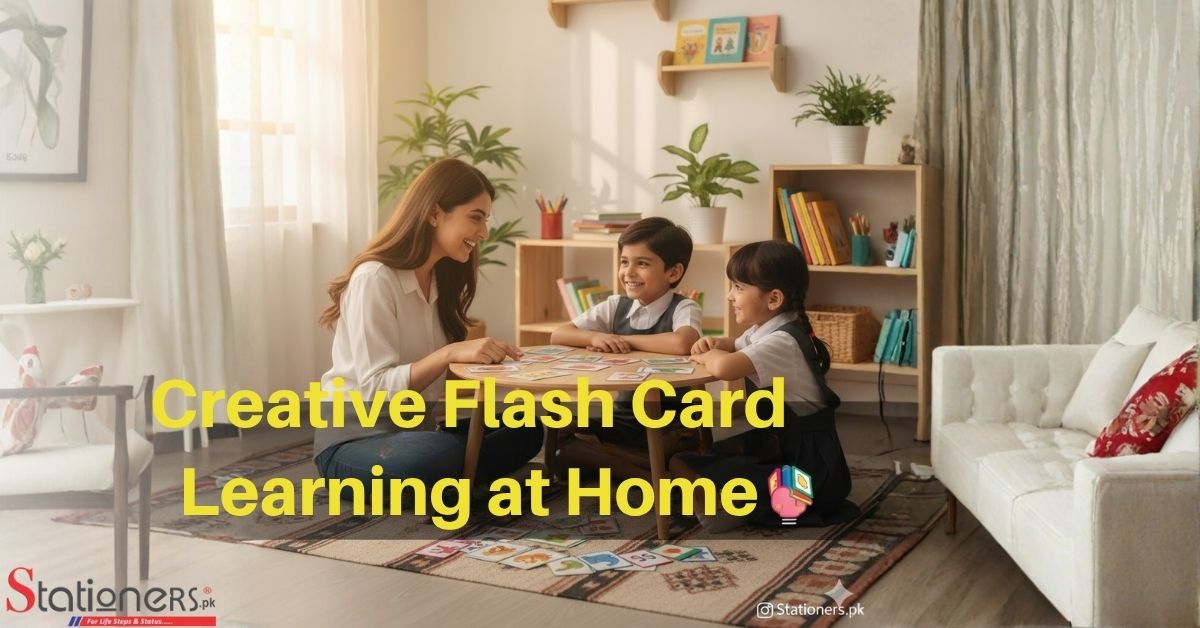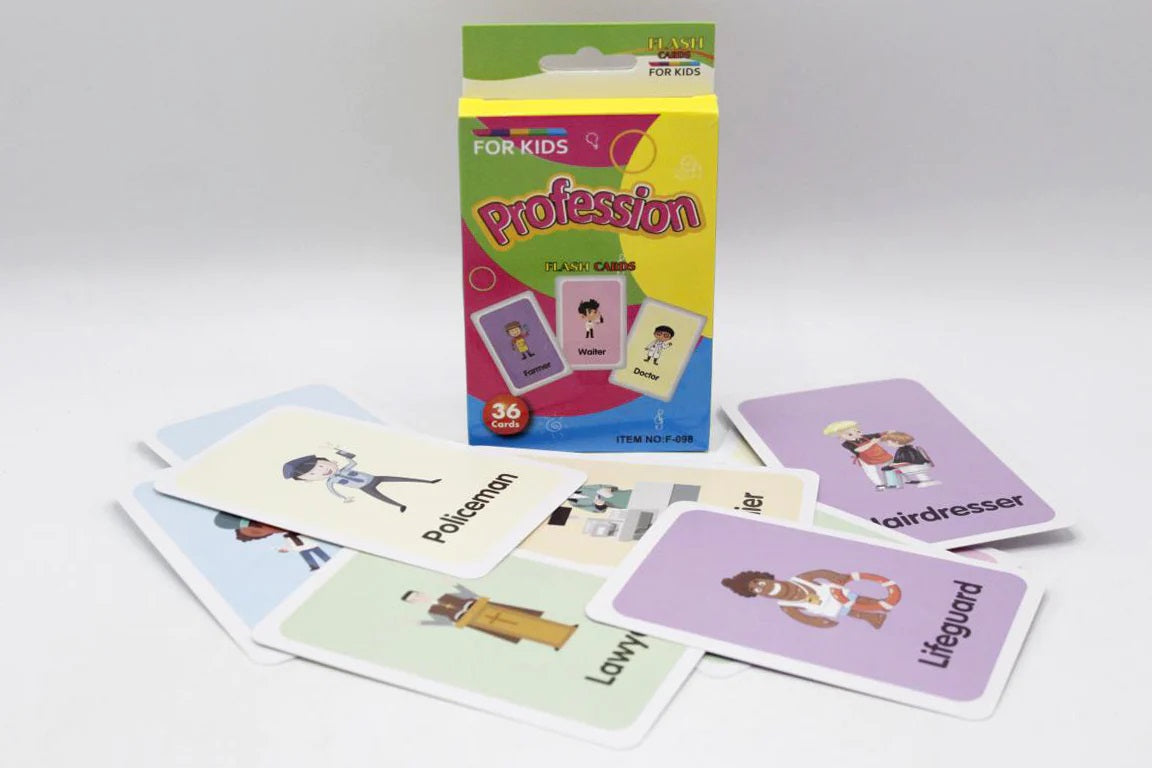In today’s digital world, teachers are constantly seeking ways to make learning more interactive and less screen-dependent. One simple yet powerful tool that continues to stand the test of time is the flash card. Whether it’s for vocabulary building, math drills, or science facts, flash cards transform boring lessons into active learning sessions that students actually enjoy.
At stationers.pk, educators and parents can find a wide variety of classroom and home-learning essentials designed to inspire creativity while keeping education engaging and accessible.
Why Flash Cards Still Work in Modern Classrooms
Flash cards may look simple, but their power lies in how they engage the brain. They promote active recall a proven learning method that helps students remember information faster and for longer. Teachers who integrate flash cards into their lessons notice improved participation, memory retention, and student confidence.
Here’s why flash cards remain effective in the era of tablets and online quizzes:
-
Encourage quick recall and critical thinking
-
Make repetitive learning fun and interactive
-
Require no digital distractions or power sources
-
Ideal for all age groups — from preschoolers to high schoolers
-
Easy to personalize for different subjects and levels
1. Turn Vocabulary Lessons into a Fun Challenge
Instead of rote memorization, teachers can use flash cards to make language lessons engaging. Divide the class into teams and hold quick-fire vocabulary matches where students flip cards and explain or use the word in a sentence.
At home, parents can support this activity by creating color-coded cards for nouns, verbs, and adjectives, making the learning process more visual and interactive. This method is particularly useful for children struggling with reading comprehension or English fluency.
2. Strengthen Memory Retention with Visual Flash Cards
Teachers can combine text and images to create flash cards that trigger visual memory. For example, when teaching science, pair a picture of the solar system with the planet’s name.
This visual association helps students — especially visual learners — remember concepts more effectively. You can even encourage kids to make their own flash cards as an art project, combining creativity and study time.
3. Teach Math Concepts the Smart Way
Flash cards aren’t just for words — they’re incredibly useful for math. Teachers can use them to simplify addition, subtraction, multiplication, and fractions.
A quick five-minute flash card session before math lessons helps warm up students’ brains, encouraging mental calculation. For younger learners, colorful flash cards with illustrations (like apples for counting) make arithmetic less intimidating and more enjoyable.
4. Bring Geography Lessons to Life
Geography can be tricky for kids, but flash cards can make it exciting. Teachers can use cards with country names on one side and their flags or maps on the other.
To keep things dynamic, you can also turn it into a guessing game — “Which country has this flag?” or “Where is this capital located?” Students retain information faster when learning feels like a game.
5. Encourage Group Learning Activities
Group learning improves communication and teamwork skills. Flash cards are perfect for interactive group games like:
-
Memory Match: Match terms with definitions.
-
Quiz Relay: Teams answer flash card questions in sequence.
-
Timed Challenge: See how many correct answers teams can give in a minute.
These activities make classroom time energetic while reinforcing the lesson content naturally.
6. Flash Cards for Home Learning Success
One of the biggest challenges parents face is keeping children focused during home study sessions. Flash cards solve that problem beautifully — they make learning hands-on and engaging.
Parents can create flash card boxes for each subject. Rotate topics weekly to keep things fresh and avoid study fatigue. This method builds routine while maintaining excitement around learning.
To make learning even more efficient, pair flash cards with practical school supplies like markers, organizers, and clipboards — making at-home education structured and clutter-free.
7. Integrate Flash Cards with Other Learning Tools
Flash cards don’t have to work alone. Teachers can combine them with storytelling, worksheets, or interactive notebooks. For instance, when teaching history, pair a flash card of a historical event with a timeline worksheet.
This helps students connect facts chronologically, reinforcing both memory and understanding. The same strategy applies to science — match flash cards of chemical symbols with experiment steps or formulas.
8. Use Flash Cards to Teach Soft Skills
Beyond academics, flash cards can teach empathy, manners, and social skills. Teachers can design “emotion cards” — showing happy, sad, or confused faces — to help younger children understand feelings and improve emotional intelligence.
These cards are a great way to blend personal development into the curriculum, especially in early childhood education.
9. DIY Flash Card Projects for Students
Encouraging students to create their own flash cards combines creativity with learning. This project promotes ownership of the study material — students remember better when they design their learning tools.
Use eco-friendly paper or recycled materials to make these projects both educational and sustainable. This approach aligns with Stationers.pk’s commitment to providing environmentally conscious stationery options that promote creativity responsibly.
10. Flash Cards in the Digital Age
Even in tech-driven classrooms, physical flash cards continue to hold value. They offer a break from screens, fostering tactile learning. However, teachers can also digitize flash card sets for hybrid classrooms — combining physical cards with apps or online quizzes.
This blended approach ensures that both traditional and modern learning preferences are supported, giving students the best of both worlds.
Final Thoughts
Flash cards may be small, but their impact on learning is massive. From boosting memory to encouraging creativity and teamwork, they remain one of the most effective teaching tools for students of all ages.
Teachers and parents looking for creative learning solutions can always explore stationers.pk, Pakistan’s trusted destination for quality stationery and educational essentials.
FAQs
Q1: Can flash cards be used for all age groups?
Yes! They can be adapted for preschoolers, school-aged kids, and even university students.
Q2: Are digital flash cards better than physical ones?
Both have benefits — physical cards enhance tactile learning, while digital ones are portable and interactive.
Q3: How often should students use flash cards?
Short, consistent sessions (5–10 minutes daily) work best for long-term retention.
Q4: Can flash cards help with exam preparation?
Absolutely! They’re perfect for quick reviews and active recall before exams.
Q5: Where can teachers find quality flash cards in Pakistan?
Reliable, affordable educational tools are available at stationers.pk, Pakistan’s go-to stationery store.
Author Bio
Written by the Stationers.pk Editorial Team, specialists in stationery, art supplies, and educational tools. With a deep understanding of classroom and home-learning needs, the team helps teachers and parents find practical, inspiring solutions for modern education in Pakistan.


